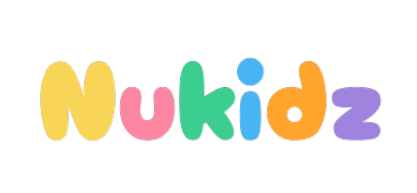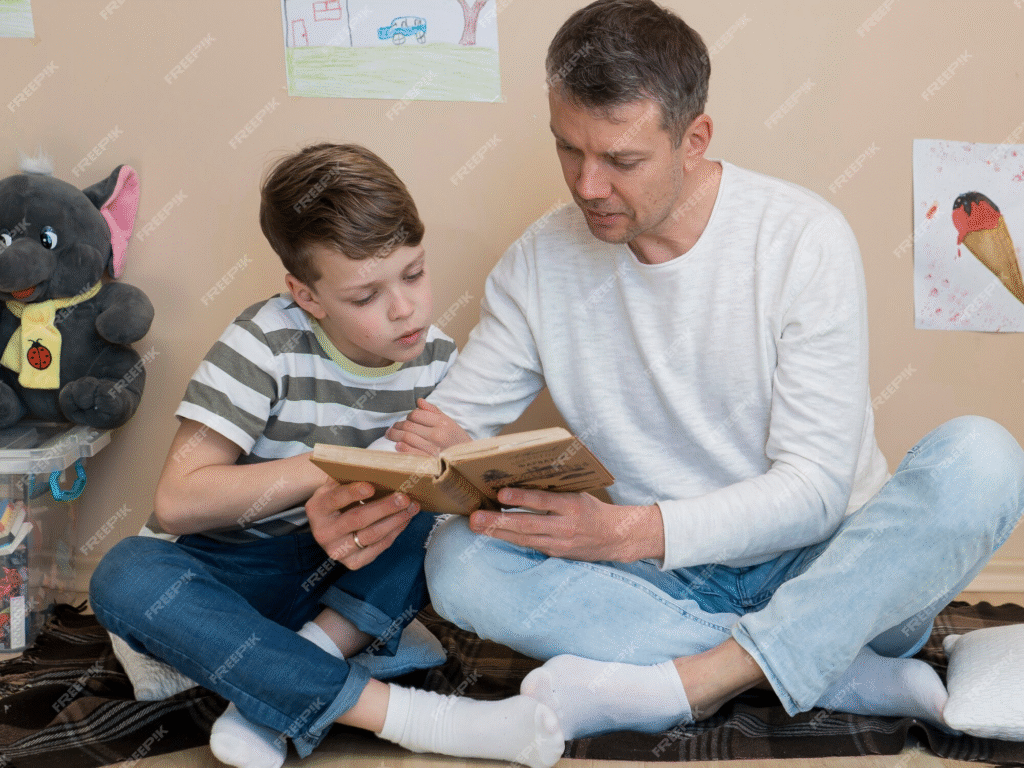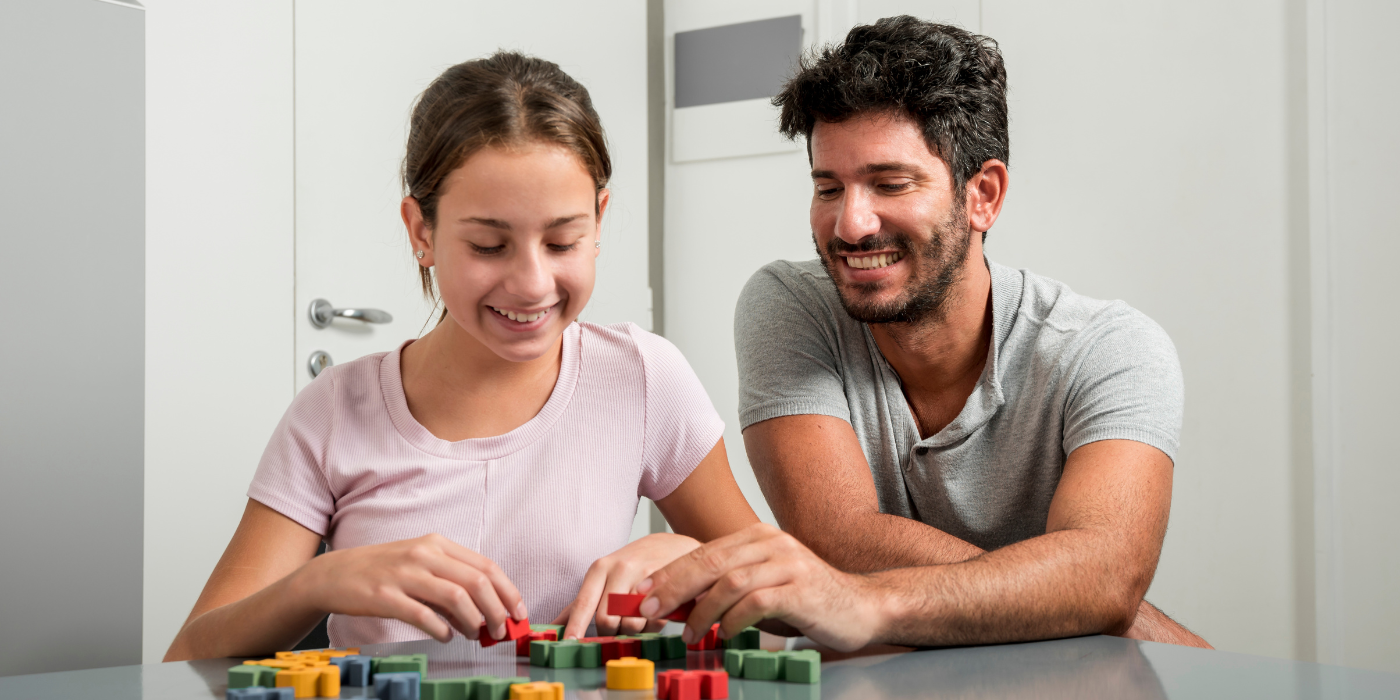P
Hello Awesome Parents! Welcome to our Reading Adventures Blog for Kids with Dyslexia!
We’re thrilled to have you here as we embark on a super exciting journey—helping your fantastic children fall in love with books!
In this blog, we’ll chat about cool and creative ways to make reading fun, especially for kids with dyslexia. We know every child is unique, and we’re here to explore ways that make reading an awesome adventure for everyone.
So, let’s get started! Together, we’ll discover ways to make reading not just a challenge to conquer but a joy to embrace. Welcome to our reading party – where every child is a star!
I. Understanding Dyslexia: Helping Your Child with Reading Challenges
A. What is Dyslexia?
Dyslexia is a learning difference that can make reading, spelling, and writing a bit tricky for some kids. It is like having a unique way of thinking about words. While many kids easily connect letters to sounds and words, dyslexic children might find this a bit tricky. It doesn’t mean your child is not smart; it just means their brain processes words differently.
Imagine reading as a puzzle. For kids with dyslexia, the pieces might not fit together smoothly, but with the right support, they can still complete the puzzle and enjoy stories like everyone else.
B. Recognizing Dyslexia in Children
- Difficulty with Words: If your child struggles to recognize or sound out words, especially common ones.
- Mixing Up Letters: Swapping letters like “b” and “d” or “p” and “q” can be a sign.
- Reading Slowly: Taking more time than peers to read a sentence or paragraph.
- Avoiding Reading Aloud: Being hesitant or unwilling to read in front of others.
- Spelling Challenges: Making frequent spelling errors, even with simple words.
Keep in mind that each child is unique, and these signs may vary. If you notice several of these signs, it might be worth exploring further with a teacher or a specialist.
C. Clearing Up Common Misunderstandings
It’s important to know that dyslexia is not about laziness or lack of intelligence. It’s a wiring difference in the brain. Clearing up misunderstandings helps you and others to support your child better.
Myth 1: Dyslexic Kids Aren’t Smart
- Truth: Dyslexic kids are often bright and creative; they just need different strategies for learning.
Myth 2: Dyslexia Only Affects Reading
- Truth: While reading is a common challenge, dyslexia can also impact spelling and writing.
Myth 3: Dyslexia is Outgrown
- Truth: Dyslexia is a lifelong difference, but with support, individuals can develop strong reading skills.
Myth 4: More Practice Fixes It
- Truth: While practice helps, dyslexic kids benefit from specific approaches and understanding.
By dispelling these myths, you create a supportive environment that focuses on your child’s strengths and unique way of learning.
II. Creating a Happy Reading Space: Making Books Fun and Inviting
A. Cozy Reading Corners at Home
- Creating a cozy reading corner is like making a comfy nest for your child and their books.
- Find a quiet spot with soft pillows and blankets. Add some favourite stuffed animals or a special reading chair. Make it a magical place where stories come to life!
- You can also let your child help decorate the reading nook. Maybe they want to add fairy lights, colourful posters, or their own artwork. The goal is to make this space feel like a warm hug, inviting them to dive into the world of stories.
B. Fun Ways to Learn with All the Senses
Reading is not just about eyes and words—it’s a whole experience! Engage all the senses to make it exciting.
- Touch and Feel Books: Explore books with different textures. Let your child touch and feel the pages.
- Act Out the Story: Turn reading into a mini play. Use funny voices, act out characters, and let the story unfold in a lively way.
- Snack Time Stories: Snack while you read! It could be a special treat related to the story or just a yummy snack to make reading time extra enjoyable.
By involving different senses, you’re making reading a full-body adventure, not just an activity for the eyes and brain.
C. Cheers for Every Reading Milestone
- Celebrate every step your child takes on their reading journey! Whether it’s finishing a chapter, learning a new word, or even just attempting a challenging book, each milestone is a reason to cheer.
- Create a simple reward system—maybe stickers on a chart or a high-five party after finishing a book. Positive reinforcement builds confidence and turns reading into a joyful celebration.
- Remember, every little victory deserves a big cheer!
Creating a happy reading space is like planting seeds of joy that will grow into a love for books. So, let’s make reading time not just educational but a blast of fun and smiles!
III. Reading Tricks Tailored for Dyslexic Readers: Finding What Works Best
A. Playful Phonics Games
Learning letters and sounds can be a game! Try fun activities that sneak in phonics:
- Letter Hunt: Search for letters around the house or in a book. It’s like a treasure hunt for sounds!
- Rhyme Time: Play with rhyming words. Make up silly rhymes together—it’s like creating your own word songs.
- ABC Hopscotch: Make a hopscotch grid with letters. Jump on them and say the sounds—it’s like a hopscotch dance party!
Turning phonics into games makes learning letters feel like playtime, making it enjoyable for your child.
B. Enjoying Stories with Audiobooks
Stories can come to life through your ears! Audiobooks are like magical storytellers:
- Listening Together: Pick a story and listen with your child. It’s a cozy way to share a tale without the pressure of reading.
- Sound Effects Adventure: Choose audiobooks with cool sound effects. It’s like being in the middle of a story movie, but just with your ears!
- Create a Listening Spot: Find a comfy spot, close your eyes, and let the audiobook take you both on a storytelling adventure.
Audiobooks add a whole new layer of fun to reading, and your child gets to enjoy the magic of words in a different way.
C. Exploring Dyslexia-Friendly Books with Fonts and Formats That Help
Not all books look the same, and that’s okay! Some books have special features that make reading easier:
- Big and Bold Text: Look for books with larger and bolder fonts. It’s like having words that stand out and say, “Read me!”
- Short Chapters: Choose books with short chapters. It’s like breaking down a big story into smaller, more manageable adventures.
- Picture Books with Speech Bubbles: Explore books with lots of pictures and speech bubbles. It’s like reading a story while watching a cool picture show.
Finding books with friendly fonts and cool formats makes reading feel like a breeze, creating a positive experience for your child.
These reading tricks are all about making learning fun and tailored to what your child enjoys. Let’s explore the world of words in ways that spark joy and excitement!
IV. Stories That Come Alive: Making Reading an Adventure
A. Reading Together and Acting Out Stories
Reading together can be like having a little party with the story!
- Character Fun: Take turns reading different characters. Make funny voices—it’s like creating your very own story show!
- Acting It Out: Choose a part of the story to act out. It’s like bringing the words to life and making the story an exciting adventure.
- Ask Questions: Pause and ask questions about the story. It’s like having a chat about the book.
- Guess What Happens Next: Make reading a guessing game. It’s like predicting the story’s surprises together.
Reading becomes an interactive adventure, and your child gets to be the star of the show!
B. Letting Imagination Run Wild with Creativity
Reading is not just about words; it’s about letting your imagination soar!
- Picture the Story: Encourage your child to imagine the scenes in their mind as they read. It’s like creating a personal movie in their head.
- Draw the Adventure: After reading, draw pictures related to the story. It’s like turning the words into colourful art.
- Make a Story Twist: Change the ending of the story. It’s like becoming the author and adding your own creative touch.
Letting creativity flow turns reading into a magical journey where your child’s imagination takes the lead!
C. Joining a Book Club for Kids with Dyslexia
Being part of a book club is like being in a reading team with friends!
- Meet Book Buddies: Joining a book club means making friends who love reading too. It’s like having a reading team!
- Share Thoughts: Talk about the book with others. It’s like having your own book party where everyone shares their favourite parts.
- Discover New Books: Book clubs introduce your child to different stories. It’s like going on many reading adventures with friends.
Being in a book club adds a social and fun element to reading, making it a shared adventure for your child.
So, let’s make reading an exciting journey—full of plays, imagination, and book club friends!
V. Tech Tools That Help: Using Gadgets for Reading Support
A. Dyslexia-Friendly Apps and Software
Think of these as special helpers on a device, making reading easier and more enjoyable!
- Letter Games: Apps that turn learning letters into fun games. It’s like playing and learning at the same time!
- Spelling Helpers: Software that supports spelling. It’s like having a friendly coach for tricky words.
- Word Puzzles: Apps that turn words into puzzles. It’s like solving a word mystery while having fun!
Dyslexia-friendly apps and software make reading a tech-savvy adventure, customized to your child’s needs.
B. E-Books with Special Features
E-books are like regular books, but with some cool extras!
- Interactive Pictures: Touch the screen to make pictures move. It’s like having a story come to life!
- Highlight Words: E-books can highlight words as they’re read. t’s like having a guide through the story.
- Games Inside Books: Some e-books have fun games. It’s like playing and reading at the same time!
- Font Magic: Change the font and text size. It’s like making the words look just right for your child.
E-books with customizable features add a personal touch to reading, making it a unique and enjoyable digital experience.
C. Listening to Books with Speech Tools
Imagine having a reading buddy in your device—a friend that read the words aloud!
- Listen and Learn: Speech tools read the words aloud. It’s like having a reading companion.
- Pause and Play: You can pause and play whenever you want. It’s like being in control of your reading time.
- Enjoy Anywhere: Listen to books on the go. It’s like carrying stories in your pocket!
Listening to books with speech tools turns reading into a flexible and engaging experience..
These tech tools are like magical helpers, making reading more interactive, enjoyable, and accessible for your child. Let’s explore the world of words with a touch of tech magic!
VI. Boosting Confidence: Encouraging Your Child’s Reading Journey
A. Lots of Praises and High-Fives
Think of praise as sunshine that helps your child’s reading skills grow!
- Encouraging Words: Tell them how great they’re doing with their reading. It’s like saying, “You’re doing an amazing job!”
- High-Fives and Cheers: Celebrate small wins with high-fives and cheers. It’s like giving them a confidence boost with every high-five.
- Positive Vibes: Share positive words about their reading journey. It’s like creating a happy atmosphere around reading time.
Lots of praises and high-fives build a sense of accomplishment and make reading a joyful experience.
B. Setting Small Goals and Celebrating Progress
Picture reading goals as exciting checkpoints on a journey!
- Mini Reading Challenges: Set small reading goals that are achievable. It’s like turning reading into a fun challenge.
- Progress Stickers: Use stickers to mark achievements. It’s like creating a colourful map of their reading journey.
- Celebration Moments: Celebrate reaching each goal. It’s like having a mini party for every reading milestone.
Setting small goals and celebrating progress turns reading into a series of exciting accomplishments.
C. Finding Joy in Learning Beyond Books
Learning is like a treasure hunt with surprises around every corner!
- Explore Hobbies: Discover activities your child loves. It’s like finding joy in different learning adventures.
- Creative Playtime: Encourage imaginative play. It’s like turning everyday moments into playful learning experiences.
- Learning Together: Explore new things together. It’s like creating a special bond through shared learning moments.
Finding joy in learning beyond books expands the adventure of discovery, making every day an opportunity to learn and grow.
Boosting confidence is like giving your child a superhero cape for their reading journey. With praises, goals, and joyful learning, let’s make their reading adventure filled with excitement and success!
VII. Teamwork with Teachers: Creating a Supportive School Environment
A. Talking with Teachers and Getting Extra Help
Imagine teachers as helpful friends on this reading journey!
- Open Communication: Talk to teachers about your child’s reading needs. It’s like creating a team where everyone is on the same page.
- Ask for Extra Help: If your child needs more support, ask teachers for extra help. It’s like having a supportive hand to make things easier.
- Create a Plan Together: Work with teachers to create a plan for your child’s reading success. It’s like building a roadmap to guide them.
Talking with teachers and seeking extra help ensures your child has the support they need to thrive in their reading adventures.
B. Sharing Ideas and Working Together
Think of school as a big playground where everyone plays a part in your child’s success!
- Share Your Insights: Share what works well for your child at home. It’s like giving teachers a special key to understanding your child better.
- Create a Team Atmosphere: Teachers and parents make a powerful team. It’s like everyone joining forces to support your child’s reading journey.
- Regular Check-ins: Stay connected with teachers. It’s like having a continuous conversation about your child’s progress.
Sharing ideas and working together creates a positive and supportive environment for your child’s learning.
C. Learning from Dyslexia-Friendly Events
Imagine school events as exciting learning fairs tailored to your child’s needs!
- Participate in Events: Attend dyslexia-friendly events organized by the school. It’s like joining a special reading celebration.
- Learn Helpful Strategies: Gather strategies shared during these events. It’s like adding more tools to your child’s reading toolkit.
- Connect with Other Parents: Meet other parents and share experiences. It’s like building a community that understands and supports each other.
Learning from dyslexia-friendly events enriches both you and your child’s experience at school, making it a positive and inclusive space.
Working together with teachers creates a supportive and collaborative environment for your child’s reading journey. Let’s build a strong team to ensure success and joy in learning!
VIII. The Parent-Child Bond: Making Reading a Shared Adventure
A. Reading as a Family Tradition
Think of family reading as a special tradition, like a cozy hug for your hearts!
- Set a Special Time: Pick a time for family reading. It’s like having a dedicated moment when everyone gathers.
- Take Turns Reading Aloud: Share the joy of reading by taking turns reading aloud. It’s like passing a story baton in the family relay.
- Share Favourites: Each family member can share their favourite books. It’s like creating a library of family treasures.
Reading together as a family tradition turns it into a heartwarming and cherished routine filled with shared stories and laughter.
B. Talking About Books in Everyday Chats
Picture books as friendly conversation starters, like little companions in your daily talks!
- Discuss Characters: Talk about the characters in the books you’re reading. It’s like having new friends to chat about.
- Guess What Happens Next: Make predictions about what might happen next in the story. It’s like becoming a family of storytellers.
- Connect to Real Life: Relate the book to everyday experiences. It’s like bringing the magic of books into your daily conversations.
Talking about books in everyday chats makes reading a natural and enjoyable part of family life.
C. Choosing Books That Match Interests and Hobbies
Think of picking books as choosing adventures that everyone in the family can enjoy together!
- Explore Each Other’s Interests: Find books related to each family member’s interests. It’s like embarking on exciting journeys that everyone loves.
- Discover New Hobbies: Explore books that introduce new hobbies. It’s like opening doors to a world of possibilities.
- Create a Family Reading List: Make a list of books everyone wants to read. It’s like planning a roadmap for your family reading adventure.
Choosing books that match interests and hobbies ensures that family reading time becomes a thrilling exploration for everyone.
The parent-child bond grows stronger with every shared story, every laugh, and every moment spent together in the magical world of books. By making reading a family ritual, incorporating books into daily conversations, and picking books aligned with interests, you’re creating a wonderful adventure that strengthens the bonds of love and learning in your family!
Conclusion: Happy Parenting with Dyslexia
In this blog, we have discovered cool ways to make reading awesome for kids with dyslexia. It’s like turning each reading moment into a happy adventure!
Remember, being a happy parent with a dyslexic child means cheering for every small win, teaming up with teachers, and making family reading time super special. You’re not just helping your child read; you’re creating smiles, building confidence, and making memories together.
So, here’s to the joy of parenting with dyslexia! Keep celebrating, keep reading, and keep making each day a happy and learning-filled adventure.







